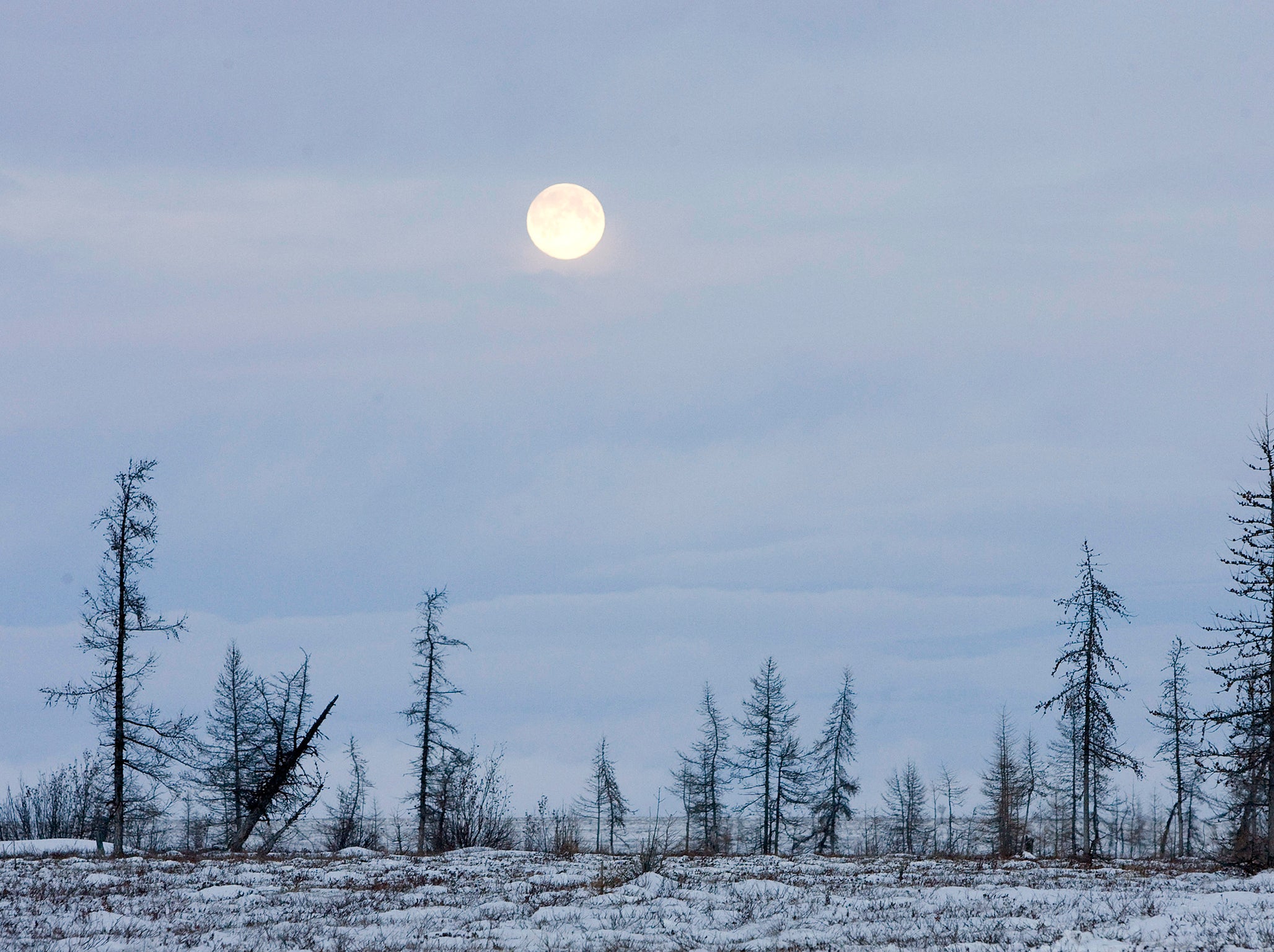Snow moon: Night to see February’s full moon as snowiest month comes to a close
Each of the month’s moons is given a name in the US, corresponding with seasonal changes in the weather and nature

Your support helps us to tell the story
From reproductive rights to climate change to Big Tech, The Independent is on the ground when the story is developing. Whether it's investigating the financials of Elon Musk's pro-Trump PAC or producing our latest documentary, 'The A Word', which shines a light on the American women fighting for reproductive rights, we know how important it is to parse out the facts from the messaging.
At such a critical moment in US history, we need reporters on the ground. Your donation allows us to keep sending journalists to speak to both sides of the story.
The Independent is trusted by Americans across the entire political spectrum. And unlike many other quality news outlets, we choose not to lock Americans out of our reporting and analysis with paywalls. We believe quality journalism should be available to everyone, paid for by those who can afford it.
Your support makes all the difference.A full “snow moon” is about to be visible in the sky.
The bright full moon is set to rise on Monday night. And it will be known — at least to some — as the snow moon that occurs each February.
In America, each moon takes on its own name, usually decided by changes in the weather or the seasons. February’s full moon is named after snow since February is usually the year’s snowiest month, and it can also be referred to as the hunger moon since hunting is so hard.
Some of the more famous named moons include the harvest moon, which is the full moon that comes closest to the autumnal equinox.
Unlike events like the blood moon, the snow moon and similar moons are not scientific phenomena and the moon itself will not look unusual. Instead, they are a part of relatively recent American folklore, some of which at least claims to have come from or been influenced by Native American people.
In that tradition, each month is given its own name.
Because February is a day shorter than the lunar cycle, the month sometimes doesn’t have a moon at all. That comes about once in every 19 years.
Join our commenting forum
Join thought-provoking conversations, follow other Independent readers and see their replies
Comments